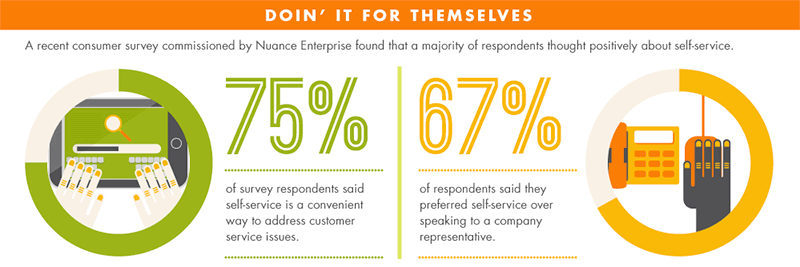In a world where “Google it” is the first reflex to any question, your digital content has become the unofficial frontline of your customer service army. Gone are the days when the friendly voice on the other end of the line was the first touchpoint for puzzled customers. Now, it’s your website, your blog, and your social media feeds that are doing the heavy lifting, often long before a customer ever picks up the phone or sends an email.
But these digital soldiers are only as good as the armor they wear — your content. Subpar customer support content leaves your front lines vulnerable and unprepared for the onslaught of questions and concerns that might pelt your business every day. Conversely, an effective support content arsenal equips them to fend off confusion, empowering customers to help themselves and lightening the load on your customer service team.
So, how do you ensure that your content not just markets your message but also stands as a robust, engaging, and informative pillar of support? Fear not, for we’ve got the blueprint. In today’s article, we’ll dive into the nitty-gritty of customer service content that doesn’t just sit there looking pretty, but actively works to smooth out the bumps in your customer’s journey.
In This Article
Why Is Customer Support Content Important?
While everyone’s busy singing the praises of content as the ultimate bait for new eyeballs and leads, many still haven’t realized its potential in the realm of customer support. Now, don’t get us wrong. We love a good blog post or a snazzy social media feed that reels in the crowds. But what about those who have already bought a ticket to your show? How do we keep them not just sitting but applauding in their seats?
With research from Nuance Enterprise indicating that 67% of people prefer self-service over talking to company representatives, it’s clear that the customers of today are a self-sufficient bunch. They want to be detectives in their own cases, digging up clues and solving their queries without dialing a number or drafting an email. And who can blame them? In an age where time is the new currency, who wants to spend it waiting on hold or explaining their issue for the umpteenth time?
But let’s face it, sometimes the self-service journey feels like navigating a labyrinth without a map. Despite their best efforts, 58% of customers, according to Nuance, hit dead ends in self-service alleys. This leaves them no choice but to turn to customer service reps, much to their frustration.
So, what’s the solution? The answer lies in creating a support content strategy that’s not just a passive library of information but an active, engaging guide that assists customers in finding their own solutions.
Strategies for Stellar Self-Service Content
It’s time to elevate your content from being a mere background player to the hero of your customer service narrative. Here are some strategies to help you kick off your journey.
Turn Queries into Quality Content
Let’s be honest, your support team has probably heard every conceivable question under the sun about your product or service. They’re like the encyclopedias of customer pain points. So, why let this rich source of intel gather dust? Fuse your content creation strategy with the wisdom of your support staff and use those frequently asked questions as a launching pad for crafting a trove of helpful resources.
Take the Yotpo case study, for example. Their support team was drowning in customer queries, a clear signal that their users were in desperate need of guidance. So, what did they do? They didn’t just bandage the situation; they built a knowledge base behemoth, an online library housing over 600 articles. This resulted in wiping thousands of repetitive queries off the table and significantly reducing overall ticket volume, all while their customer base continued to grow.
Blog Your Way to Better Support
Imagine this: A customer is baffled about how to configure a feature on your latest gadget. They head to Google, type in their question, and voila! Up pops a blog post from your site, explaining the process in simple, jargon-free language, complete with a step-by-step guide. Blogs are not just vessels for SEO traffic and thought leadership; they can also play a crucial role in the delivery of customer support.
For instance, let’s say you’ve noticed an uptick in inquiries about installing your new software update. Instead of letting your support team field these calls ad infinitum, create a comprehensive blog post. This becomes a go-to resource, reducing call volumes and providing customers with instant gratification. They get their answers, and your support team gets to focus on more complex queries.
Leverage Multimedia Content
In the age of TikTok and YouTube, let’s not kid ourselves by thinking that everyone wants to read a 2000-word article on “How to reset their password.” Sometimes, a video tutorial can do the job in half the time with twice the impact. It’s important to acknowledge that while some customers love to pore over detailed guides, others might prefer a quick video walkthrough or a catchy infographic.
Consider the DivvyHQ Walkthroughs Playlist on YouTube, showcasing a variety of demos and how-to guides. Instead of lengthy written guides, they opted for video tutorials. The result? A more dynamic and digestible way for customers to grasp the product’s functionality. It’s about meeting your customers in their comfort zone — be it reading, watching, or clicking through an infographic.
Best Practices to Get Started
Now that we’ve explored some powerful strategies to enhance your customer support through content, let’s delve into the best practices that will set you on the path to success.
Ensure Accessibility for All
Imagine you’re in a library with every book you could ever need, but there’s no catalog, and the books are in a language you barely understand. Frustrating, right? That’s the mess you get with lousy support content. Avoid this customer support faux pas by:
- Write for Clarity, Not for Show. Your support content isn’t the place to flaunt your vocabulary or expertise in technical jargon. Write as if you’re explaining it to a friend who’s smart but not an expert in your field. Use plain language, short sentences, and bullet points.
- Organize and Optimize for Easy Navigation. Sure, we’ve all had those moments of scrolling endlessly through a company’s knowledge base, feeling the slow burn of irritation when we can’t find what we’re looking for. To avoid this, structure your content with intuitive categories and searchable tags. And hey, a search bar wouldn’t hurt, either!
- Check Device Compatibility. Remember, not everyone is tethered to a desktop. With a significant portion of web traffic coming from mobile devices, ensure your content is responsive and easy to navigate on smaller screens.
Keep it Fresh and Functional
Your support content strategy shouldn’t be a ‘set it and forget it’ deal. To keep your content relevant and useful, it needs regular TLC:
- Do Regular Audits for Relevance. There’s nothing more exasperating than finding the answer you need, only to realize it’s outdated. Regularly review your support content to ensure it’s up-to-date and in line with your current offerings. Prune the outdated, water the relevant, and plant new seeds of content that anticipate future customer needs.
- Embrace Feedback Loops with Customers and Support Teams. Encourage customers and your support team to flag issues with your current system of support content and suggest improvements, fostering a collaborative ecosystem that continuously polishes your content to shine brighter through what is closed-loop feedback.
- Incorporate Change Management Practices. Whenever there’s a product update or a change in policy, make sure this is immediately reflected in your content. Develop a change management process that ensures all relevant support materials are updated in sync with product or policy changes.
Measure Your Efforts
You’ve deployed your content troops into the wild — now it’s time to see how they fare in battle. But how do you know if your content is a hit or a miss with your audience? Let’s dive into the metrics that matter.
- Track Customer Satisfaction Scores. The ultimate litmus test for your support content? How it affects customer satisfaction. Higher satisfaction scores often correlate with more effective self-service options. After a customer has used your support content, prompt them with a quick survey. It’s direct feedback on whether your content hits the mark or misses it by a mile.
- Analyze Support Ticket Trends. A decrease in the volume of support tickets can also indicate that customers are finding the answers they need through your content. Conversely, a spike in certain areas might signal a gap in your information arsenal.
- Monitor Time on Page and Bounce Rate. Analyze the average time customers spend on your support content pages. A longer time on page suggests that customers are reading and engaging with your content, while a high bounce rate may indicate that your content isn’t meeting their needs.
Empower Your Support Team
Your support team’s employee engagement rates might already be climbing thanks to your top-notch customer support content taking the brunt of customer inquiries. But to send those engagement rates soaring, you need to arm your team with a platform that further simplifies support content management, and streamlines customer redirection. Here’s how to do it:
- Update your Document Management System (DMS). Your team needs a document management system that’s agile, user-friendly, and capable of keeping up with the dynamic nature of your content. Now, you can either go manual, with hands-on control but potentially more complexity, or you can opt for a software-based solution that automates and simplifies but might come with a learning curve. It’s crucial to conduct a comprehensive comparison of both paths before finalizing your decision. And if you do decide to go the software route, don’t opt for the first solution you see. Research and compare leading DMS software options before making your choice.
- Invest in a Content Planner. Your support content isn’t just another project but a dynamic, evolving entity that demands ongoing attention and refinement And while project management tools are great for keeping tabs on deadlines and assignments, they often fall short in managing the unique needs of content creation and distribution. Enter content planning tools — these specialized platforms are designed for content management, offering features like editorial calendars, workflow automation, and analytics. This isn’t just about keeping your team organized. It’s about giving them a tailor-made tool that understands the rhythm of content production and ensures that your support material is always fresh, relevant, and on point.
- Integrate Direct Ticketing Options. Ever read a support article and thought, “This is helpful, but I still need to talk to someone”? By integrating a direct ticketing system, customers can jump straight from an article to raising a ticket, seamlessly connecting the dots between self-help and personalized support. Most ticketing platforms like Zendesk allow seamless transitions from content to customer support, ensuring that help is just a click away. And if you operate in the B2B space, you can extend this strategy by employing a tool like Thena that will bring customer support interactions directly to most B2B businesses’ communication turf, Slack.
When Content Meets Customer Care
Customer service can be the Achilles’ heel for even the mightiest of businesses. But, with a well-crafted, dynamic support content strategy, you transform this potential vulnerability into a bastion of strength. Every piece of content you create can become a strategic ally in the quest to elevate customer experience. So, wield your content wisely, and watch as it transforms your customer support from good to exceptional.
For more great tips, tricks, and how-tos, subscribe to the DivvyHQ blog today!


